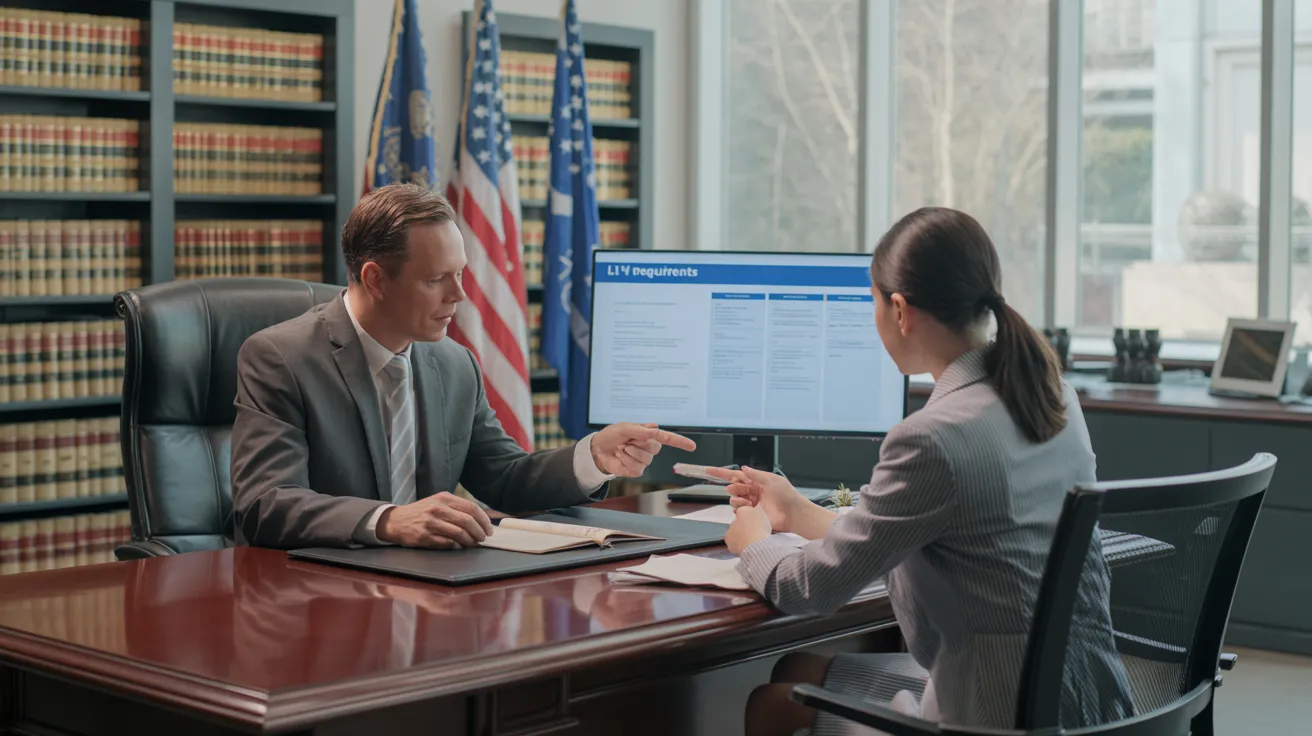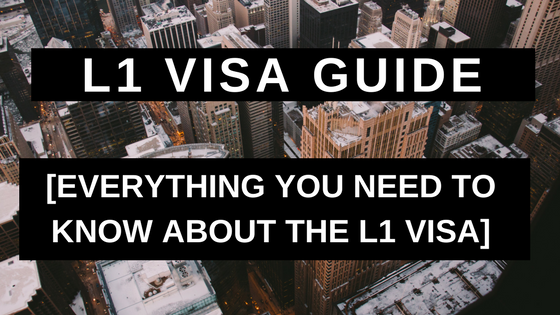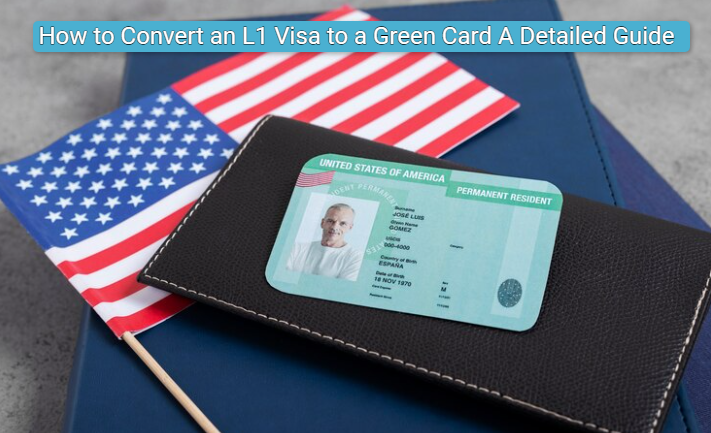Unlocking Opportunities: A Comprehensive Overview to the L1 Visa Process
The L1 visa process offers an important pathway for multinational firms looking for to move vital employees throughout borders. Comprehending the nuances of qualification criteria, the distinctions in between L-1A and L-1B visas, and the intricacies of the application procedure can considerably affect a candidate's success. Nonetheless, steering this complicated landscape is not without its difficulties, and cautious focus to documents and employer sponsorship is essential. As we explore the vital parts of this process, the approaches for overcoming possible barriers will certainly end up being obvious, revealing how educated preparation can open up a globe of chances.
Understanding the L1 Visa
Recognizing the L1 visa involves identifying its value as an essential tool for international firms seeking to move experienced staff members in between international offices. This non-immigrant visa category facilitates the activity of executives, supervisors, and specialized knowledge workers to the USA, therefore enabling companies to keep functional connection and harness international ability successfully. The L1 visa is split right into 2 primary classifications: L-1A for managers and executives, and L-1B for workers possessing specialized knowledge.The L1 visa offers an essential role in enhancing a company's one-upmanship in the global industry - L1 Visa. By enabling business to move their crucial workers, businesses can assure that important projects are handled by certified people who are already acquainted with the business's society and operational procedures. This inner transfer mechanism not only cultivates understanding sharing yet likewise promotes development and collaboration across borders.Moreover, the L1 visa is typically favored for its reasonably straightforward application process compared to other visa groups, as it permits for twin intent, permitting owners to pursue permanent residency while on a short-term job visa. This attribute makes the L1 visa particularly appealing for both companies and workers, as it streamlines the pathway for experienced specialists to establish long-lasting residency in the USA
Qualification Standards
Qualification for the L1 visa hinges on numerous vital standards that ensure both the worker and the employer satisfy details certifications. This non-immigrant visa is created for international business to transfer staff members from foreign offices to U.S. counterparts.Firstly, the company needs to be a qualifying organization, which consists of a parent business, branch, associate, or subsidiary of a united state service. The firm should have been doing business for at the very least one year both in the U.S. and abroad. This assures that the firm has adequate operational security and a genuine presence.Secondly, the worker has to hold a supervisory, executive, or specialized understanding setting. For L1A visas, the candidate should show managerial or executive credentials, while L1B visas concentrate on specialized expertise pertaining to the company's items, services, or processes. In addition, the employee should have benefited the foreign entity for a minimum of one continuous year within the last three years prior to their application.Lastly, the employee's duty in the united state should align with their previous setting, making sure that their abilities and expertise are leveraged for the firm's benefit.
Sorts Of L1 Visas
The L1 visa classification comprises two key kinds developed to help with the transfer of employees within multinational firms: the L1A visa for managers and execs, and the L1B visa for employees with specialized understanding. Each type offers distinct objectives and has certain eligibility criteria.The L1A visa is tailored for people who hold managerial or executive positions within a firm. This visa enables high-level employees to transfer to an U.S. branch, subsidiary, or affiliate of the exact same company. Applicants for the L1A visa should demonstrate that they have been used in a managerial or executive capacity for at the very least one continual year within the past three years before their application. In addition, this visa supplies a longer duration of keep, originally approved for 3 years, with the opportunity of expansions for up to 7 years.In contrast, the L1B visa is intended for specialists with specialized understanding pertaining to the firm's items, solutions, or procedures. To qualify, candidates must verify that their proficiency is vital to the organization and that they have helped a minimum of one continual year within the last three years in a duty that needed this specialized knowledge. The L1B visa is initially granted for three years, with extensions available for up to 5 years.Both visa kinds are necessary for firms looking for to improve their global procedures by leveraging knowledgeable employees, therefore promoting technology and effectiveness within the U.S. market.
Application Process
Steering through the L1 copyright process involves several vital steps that must be carefully followed to guarantee a successful result. The procedure begins with the united state employer, that must initially establish qualification by showing a certifying connection with the foreign entity and validating that the worker fulfills the specific needs for the L1 visa group being sought.Once qualification is verified, the company starts the process by submitting Kind I-129, the Petition for a Nonimmigrant Employee, with the U.S. Citizenship and Immigration Services (USCIS) This form must be accompanied by a thorough description of the job tasks to be carried out, the organizational structure of both the united state and international entities, and the employee's certifications. It's vital to validate that all info is exact and total, as omissions or inaccuracies can cause hold-ups or denials.Upon authorization of the I-129 application, the following action includes the worker getting the L1 visa at an U.S. embassy or consulate in their home country. This phase requires the conclusion of Kind DS-160, the Online Nonimmigrant copyright, and setting up an interview. During the interview, the candidate has to offer evidence sustaining their credentials and the company's petition.After the visa is provided, the employee can go into the United States to function in the designated duty. Overall, cautious prep work and adherence to each action of the application process are essential for an effective L1 visa result.
Needed Documentation

Vital Types Needed
Navigating the L1 Visa procedure calls for mindful attention to the important types and paperwork required for a successful application. The key form needed is the Kind I-129, Application for a Nonimmigrant Worker, which should be finished and submitted by the U.S. company. This form describes the details of the employment deal and the qualifications of the staff member looking for the L1 Visa.Alongside Form I-129, the applicant will certainly require to complete Form I-539 if coming with relative are likewise obtaining visas. In addition, the company should supply evidence of the certifying partnership in between the U.S. entity and the international entity, usually requiring the submission of corporate documents such as short articles of consolidation or financial statements.Moreover, it is necessary to include the L Classification Supplement to Type I-129, which defines the type of L Visa being asked for-- either L-1A for supervisors and executives or L-1B for staff members with specialized expertise. Lastly, candidates ought to ensure that all types are signed and dated suitably, as insufficient submissions can bring about delays or denials. Appropriately assembling these crucial forms lays the foundation for a smoother L1 copyright procedure.

Sustaining Proof Demands
Supporting documentation is necessary for a successful L1 copyright, as it validates the claims made in the petition. Candidates have to supply a variety of files to demonstrate qualification for the visa, which is classified into 2 primary types: evidence of the certifying connection in between the united state and foreign entities and evidence of the applicant's qualifications.To establish the relationship, candidates should submit paperwork such as business organizational charts, economic statements, and proof of ownership. These documents confirm that the foreign business has a qualifying relationship with the U.S. company, whether as a moms and dad firm, subsidiary, branch, or affiliate.For the candidate's qualifications, important papers include a detailed work letter from the foreign company, detailing the applicant's job title, duties, and duration of work. Furthermore, instructional qualifications, such as degrees and diplomas, must be given to verify the applicant's knowledge in the pertinent field.
Employer Sponsorship Papers

Usual Challenges
Maneuvering the L1 visa process provides a number of usual difficulties that applicants must be mindful of. Secret problems often consist of rigid documentation demands, possible delays in handling times, and the requirement for stringent lawful compliance. Understanding these obstacles can assist candidates much better prepare and mitigate dangers throughout their copyright trip.
Documents Demands
The L1 copyright process often provides substantial obstacles associated with documents requirements. Candidates need to give comprehensive paperwork to establish eligibility, which can lead to complication and prospective delays. Key papers include evidence of a qualifying connection in between the united state and international company, proof of the applicant's employment history, and detailed info regarding the task role in the U.S.One usual difficulty is collecting enough proof to show the nature of the qualifying connection. Companies commonly battle to present clear organizational charts or monetary declarations that illustrate the connection in between the entities. On top of that, ensuring that letters of assistance from employers precisely show the candidate's task obligations and credentials is necessary, as vague summaries can result in denials.Another issue emerges from the demand for comprehensive task summaries that align with the L1 visa categories. Applicants need to articulate not only their present duty yet likewise their supervisory or specialized expertise duties clearly. This necessitates an extensive understanding of both the candidate's setting and the regulatory language used in L1 applications.
Handling Time Hold-ups
Experiencing delays in handling times is a common obstacle encountered by L1 visa candidates, often leading to disappointment and unpredictability. Numerous variables add to these hold-ups, including high application volumes, raised scrutiny of applications, and administrative backlogs within the U.S. Citizenship and Migration Solutions (USCIS) Applicants might locate that handling times can differ substantially depending on the service center managing their application, as each facility has its very own work and effectiveness levels. Additionally, the intricacy of the candidate's situation, such as the need for considerable documents or explanation, can even more expand wait times.In some circumstances, issues associated to the applicant's existing immigration condition or previous visa background might likewise cause added delays, as USCIS might require additional evaluation or information. It is essential for candidates to remain positive throughout this duration, keeping open communication with their companies and lawful agents to address any potential issues promptly.Understanding these handling time challenges can help L1 visa applicants prepare for feasible hold-ups and reduce the effect on their shift and job strategies. Patience and diligence are vital virtues in navigating this elaborate procedure.
Lawful Conformity Issues
Several L1 visa candidates run into lawful conformity concerns that can complicate their trip toward acquiring the visa. Comprehending and adhering to the particular policies set by the united state Citizenship and Immigration Provider (USCIS) is crucial. Usual difficulties include demonstrating the certifying partnership between the international and united state employers, in addition to verifying that the applicant has the requisite specific expertise or supervisory capacity.Additionally, applicants should give complete paperwork detailing their job duties, company structure, and monetary practicality of the U.S. entity. Poor or imprecise documents can result in delays and even denials. Companies have to likewise ensure that they adhere to labor legislations, consisting of wage and working condition standards, which can influence visa eligibility.Another typical issue entails preserving compliance with the regards to the visa as soon as given. Modifications in employment condition, work obligations, or firm framework can necessitate changes to the visa, which otherwise dealt with without delay can result in legal complications. Because of this, remaining notified concerning conformity demands and looking for lawful guidance when required is important to navigate the complexities of the L1 visa process efficiently.
Tips for Success
Success in the L1 copyright process frequently hinges on careful preparation and interest to information. To improve your possibilities of approval, start by thoroughly understanding the qualification demands for both the L1A and L1B visa classifications. Evaluate whether your placement at the business certifies as managerial, exec, or specialized expertise, as this categorization notably affects your application.Next, gather considerable documents that substantiates your claims. This consists of organizational graphes, thorough job descriptions, and evidence of the business's operational framework. Clear and concise proof of the certifying relationship between the united state entity and the foreign entity is essential. Confirm that all records are organized practically and provided in a professional way, as this shows your commitment and seriousness concerning the application.Engage the solutions of a seasoned migration attorney that concentrates on L1 visas. Their expertise can prove invaluable, directing you via complicated regulations and ensuring that all documents follows existing legislations. Furthermore, get ready for the interview by exercising response to common inquiries and preparing to discuss your duty and contributions to the business in depth.
Often Asked Questions
Can Family Members Come With the L1 Visa Owner?
Yes, family participants of L1 visa holders, consisting of spouses and unmarried kids under 21, can accompany the main visa holder. They may likewise make an application for L2 visas, which enable them to stay in the United States.
The Length Of Time Can I Remain on an L1 Visa?
The L1 visa allows initial remains of approximately three years, with the opportunity of extension. L1A visa owners may stay for a maximum of 7 years, while L1B visa owners can remain for five years.
Can L1 Visa Holders Get a Permit?
Yes, L1 visa holders can get a permit. L1 Visa Requirements. They might pursue long-term L1 copyright copyright residency with employment-based groups, generally calling for sponsorship from their employer, given they meet the needed qualifications and documents demands
What Occurs if My L1 copyright Is Denied?
If your L1 copyright is rejected, you may receive a notification describing the factors for rejection. You can seek to appeal the choice, reapply, or explore different visa alternatives based on your situations.
Are There Any Traveling Limitations With an L1 Visa?
An L1 visa normally permits global travel; however, re-entry to the united state rests upon maintaining legitimate status. Tourists need to ensure compliance with visa conditions to prevent complications upon return
Verdict
